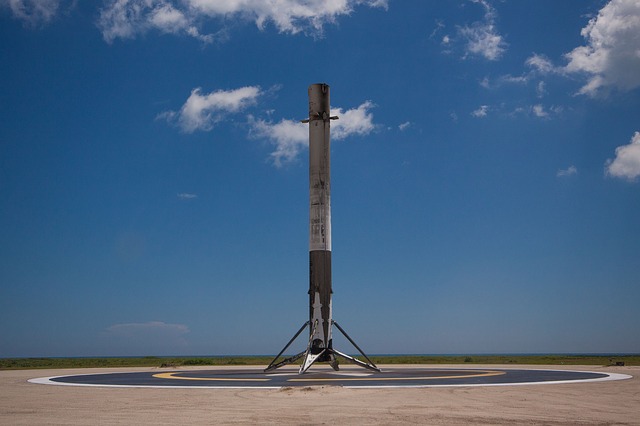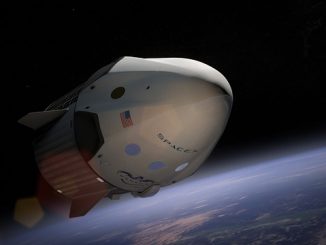
Last month, at the IAC in Adelaide, Australia, SpaceX CEO Elon Musk unveiled his company’s most ambitious project yet: the building of an eight stories tall re-usable 42-engine rocket that the billionaire entrepreneur says could revolutionize Earth-bound air and space travel — think LA to Toronto in less than 30 minutes ; Shanghai in under an hour, and a human Mars landing by 2024. Musk’s new project is an expensive next-generation vehicle called the ‘BFR’, which in a playfully and somewhat profane way stands for ‘Big Fucking Rocket’.
SpaceX (short for Space Exploration Technologies) is a US-based aerospace manufacturer and space transport services. Musk founded the company in 2002 for two things: reduce the cost of space transportation and colonize Mars. The first one is being realized right now with SpaceX’s current fleet of Falcon rockets and Dragon spacecraft, both of which have delivered cargoes into Earth’s outer space. Colonization of Mars though has to wait until 2022—an “aspirational” timeline Musk has set for his BFR to reach the red planet.
Building the BFR however, will be expensive. Musk in his 2017 aspirational target prices for the components of the vision of BFR listed as fabrication costs a $200 million ship, a $130 million tanker and a $230 million booster. It goes without saying that structure is expensive. We are talking hundred of millions of dollars here. And that means that in order to raise that kind of money SpaceX will no longer be improving its Falcon/Dragon rocket-spacecraft given the BFR will eventually become SpaceX’s primary vehicle in terms of launching satellites and traveling to the International Space Station (ISS). The company will instead dedicate its R&D resources into building it. On top of that, the revenues generated by Falcon and Dragon from launching commercial satellites into orbit and servicing the ISS for NASA will be poured into BFR’s development as well.
But as mentioned, the amount of money needed to fund the ongoing operations or future development of the project will require large amounts of money. That’s why the question that keeps persisting on the minds of space enthusiast and industry experts is whether the revenues from ISS and NASA will be enough to finance the project. Some experts are doubtful, given Musk’s timeline of sending rockets to Mars by 2022.
While luring private investment is the obvious option, SpaceX could also tap the US government for funding. Luckily, there are talks about a lunar mission by the US government and this presents a timely opportunity for SpaceX. During the conference, Musk also raised BFR’s venture to the moon and this could work well if the company could reach an agreement with NASA. If BFR could be built faster than the Space Launch System (NASA’s own rocket program), the US Congress might award the funds to SpaceX to help the US fulfill that lunar mission. This is obviously a win-win situation for all parties involved as SLS is way too expensive to build.
That said however, and assuming SpaceX has the funds to complete its BFR project, the question persist on the cost of service. In other words, will companies, space agencies, or private clients still be able to afford BFR services that will include operations like carrying satellites, servicing the ISS or cleaning up space debris. Musk himself says it will be fairly cheap since the rocket is designed as a fully reusable system.
But here lies another setback. In theory, the design of a reusable system is difficult to achieve. Supersonic speeds, extreme heat differences and intense vibrations from space travel will always bring wear-and-tear effects. On maximum, rockets may be used for 100 flights (compared to an airplane which could be reused for 10,000 flight). To justify the cost, BFR must fly a lot, but on the other hand not too many satellites are being launched that often.
SpaceX should obviously look for additional revenue options if it wants to make BFR profitable and cost-efficient in the long term. Perhaps, and apart from carrying lunar missions for NASA, it could also offer services to other national space agencies like Russia, China and Europe. In the end, if the service cost is low enough, it’s possible to create enough demand for the BFR. Speaking of demand ; in addition to launching equipment and people to Mars — Musk also said the BFR could have another major advantage for people still on Earth. He foresees the rockets being able in carrying people anywhere in the world in less than an hour.
“If you build a ship that is capable of going to Mars, well, what if you take that same ship and go from one place to another on Earth,” Musk said at the end of his IAC presentation. “We looked at that. And the results are quite interesting.”
That’s certainly a cool thing but for now creating that demand should be the last of SpaceX’s worries. The company must build the BFR first and it needs lots of capital to do that. $10 billion perhaps? That said, we are talking about Elon Musk here, the disruptor. Which means, with him anything is possible.
- Bulenox: Get 45% to 91% OFF ... Use Discount Code: UNO
- Risk Our Money Not Yours | Get 50% to 90% OFF ... Use Discount Code: MMBVBKSM
Disclaimer: This page contains affiliate links. If you choose to make a purchase after clicking a link, we may receive a commission at no additional cost to you. Thank you for your support!




If any one has the wherewithal its Elon Musk . Kudos to him